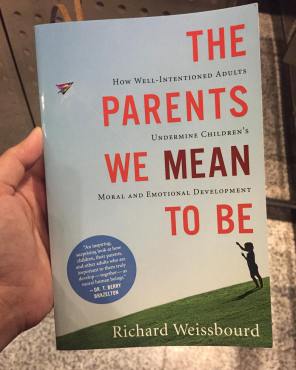Welcome to GenBio Corp, your favourite generic biological corporation. Here at GenBio Corp we are resolute in our aim to help the progression of mankind for the future. As children are our future, we hold them in the highest regard and do our best to help the next generation of humanity in any way we can. That is why we are offering you, our valued customers, a free genetic consultation for a limited time only. At your own personal consultation, our world class staff will sequence both you and your partner’s genomes and investigate any nasty genetic surprises that may affect your children. From here we can tailor your offspring’s genetic makeup to your specifications, giving them the best chance for a bright future. Your child’s life is literally in your hands.

While the above paragraph is entirely fictitious (I hope you enjoyed) and seems to strike an accord with various dystopic science fiction and that awful Ewan McGregor film ‘The Island’, the practicality of altering the DNA of our future children for the better is not as distant as some may think. In a recent article by the Independent – as well as various other news sources – the National Academy of Medicine and the National Academy of Sciences have recently reported that the editing of germline cells (sperm and egg cells) could one day be a viable option of medical treatment.
In the yearlong study, the two organisations explored a systematic approach to the introduction of germline editing – the adding/deleting of genes as desired – from stringent regulation to public transparency, which comes as change to the previously limited discussion surrounding the issue. Criteria for correct use were proposed along with suggested organisations to oversee and approve the methods used. While they recognised that current genetic editing mechanisms need to be improved upon, since the fairly recent discovery of the CRISPR/Cas9 system, gene editing has progressed at a rapid pace and has led to new consideration of its commercial viability.
At the moment, the most prominent gene editing tool available is the CRISPR/Cas9 system – a method of gene editing derived from the bacterial variant of an immune system. When a phage or virus inserts a strand of DNA into a bacterium, bacterial proteins can cut and insert a section of the phage/virus’s DNA into the bacteria’s DNA. It is inserted at a specific region called a CRISPR (Clustered Regularly Interspaced Short Palindromic Repeats) sequence – which contains various sections of inserted phage/virus DNA separated by repeat sequences. Once part of the virus DNA is incorporated into the bacteria’s, it can be transcribed into RNA which binds to a protein called Cas9, which uses the RNA strand to search for complementary sequences in foreign DNA, and can then cut the complementary DNA to stop it infecting the bacteria (picture below).
 Basic Summary of the CRISPR/Cas9 mechanism in bacteria
Basic Summary of the CRISPR/Cas9 mechanism in bacteria
In 2012/13, by exploiting this mechanism a new revolutionary way of precisely editing a genome was found, using RNA as a guide instead of proteins, unlike previous methods. This is currently the most likely way of being able to edit germline cells, and has already been attempted on non-viable embryos by Huang et al. back in 2015. This attempt, while insightful, was ultimately a failure and highlighted a multitude of problems that need to be addressed before any medical implementation of the technology.
Germline editing is currently illegal in the US and many other countries, some of which have signed conventions that ban this practice. Criteria for when clinical trials could begin were discussed and can be seen below. If the ban was to be lifted there are currently many regulatory organisations which would be capable of producing and overseeing the editing guidelines.

It’s fair to say that the topic of genetically altering future generations is just a tiny bit controversial, with people objecting to the idea due to reasons varying from ethics to religious beliefs. The report quite obviously had to acknowledge this, and at multiple times stressed the need to restrict the proposed editing to diseases which were linked to a specific gene (or set of genes) through substantial evidence. It was explicitly mentioned not to be used for, what the report termed, enhancement – genetically ‘improving’ a human in a certain way. In fact, according to Dr Richard Hynes, who was part of the board for this report, there are few ways of directly using the tools from clinical applications for enhancements due to the specific nature of the genome editing mechanism. For instance, it would be difficult to use the exact RNA sequences used to cure muscular dystrophy to increase muscle power – so unfortunately no, you’re not going to become like Arnold Schwarzenegger anytime soon!
Personally, I believe the major concern in this area is not whether we have the capacity to do this, because at some point we undoubtedly will, but whether modifying someone’s genome will become normalised in society – to the point that ‘designer babies’ or enhancements become less and less of a controversial topic, and are one day deemed morally acceptable.
Aside from potential super-humans, the other main concern about gene editing is the potential effect on future generations, which may arise in unforeseeable ways. However, it seems to me the need to satisfy public concern, combined with today’s level of communication and regulation in the scientific community, alongside the huge amounts of tests that will be carried out, means this is an unlikely outcome.
There is a vast amount of work to be done and many concerns to be assured before society is ready for this kind of technology, but hopefully one day we will be able to safely cure many diseases through genetic alteration.
If you would like to read more on this topic here are some good links:
- Independent’s article: http://www.independent.co.uk/life-style/gadgets-and-tech/news/dna-editing-diseases-genetically-modified-humans-engineering-science-report-a7581226.html
- Report summary presentation: https://vimeo.com/205455452
- Report summary article: http://www.nasonline.org/news-and-multimedia/news/Human-Genome-Editing-Report.html
- CRISPR/Cas9 used to cure Duchenne Muscular Dystrophy: https://www.ncbi.nlm.nih.gov/pmc/articles/PMC4398027/
- Huang et al. paper on editing non-viable embryos: https://link.springer.com/article/10.1007/s13238-015-0153-5
- The long development of CRISPR: http://www.cell.com/cell/pdf/S0092-8674(15)01705-5.pdf
GenBio Corp is a completely made up company on used for the purpose of this blog. I made the advertisement image using an image from: http://thetechnews.com/2016/10/19/accidental-invention-converting-co2-ethanol/
CRISPR mechanism image was made by myself
Criteria for clinical trials image was taken from the report summary presentation (link above)
Title picture taken from: https://www.youtube.com/watch?v=KYvrwBWBy8k
Advertisements Share this:




